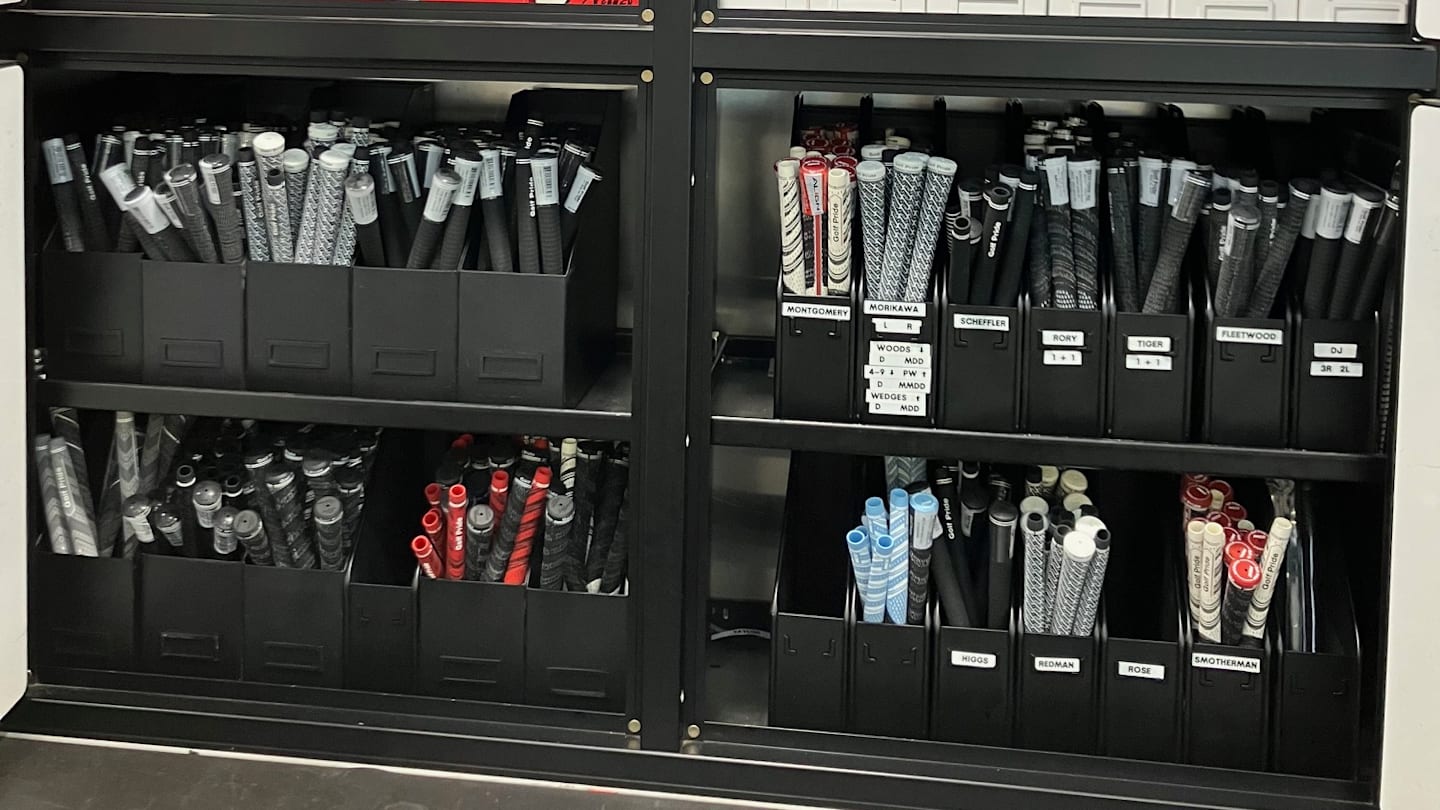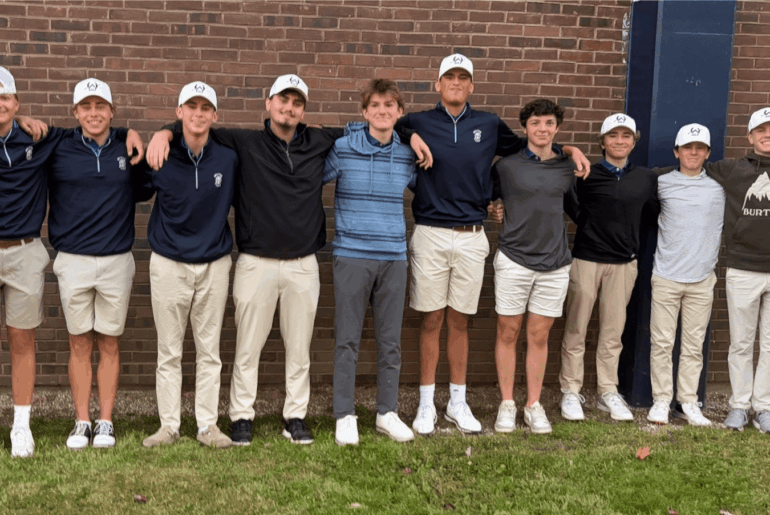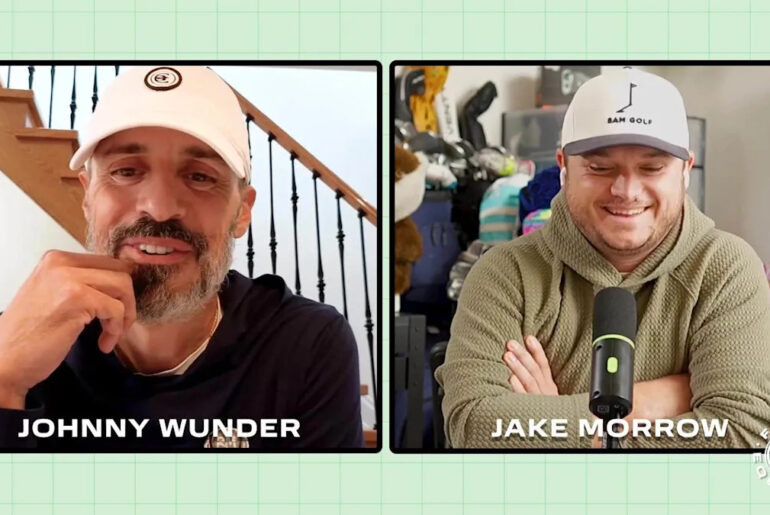At PGA Tour events, the equipment trucks stand at the ready to help players, Titleist to Callaway to Ping to TaylorMade and more, all filled with their latest and greatest. And one thing in common.
Hundreds upon hundreds of Golf Pride grips.
Brett Zollman, Golf Pride’s tour manager, is the Switzerland of equipment reps on the road, having no loyalty to any one original equipment manufacturer (OEM) but being friendly with staff from all of them. Because his company is the leader in the grip space and on any given week a number of players are going to want fresh ones.
While on the road at the Bank of Utah Championship, Zollman took a few minutes to talk to Sports Illustrated about his role in the pro golf equipment ecosystem and how players treat grips—you know, the one thing that connects all of us to our clubs.
Here were some of his best anecdotes.
> There’s no baseline for switching out grips. This kinda sounds obvious for pros and amateurs; us weekend warriors might need new grips once a year or maybe more frequently if we’re playing and practicing more. Pros of course go through grips more often—but sometimes they’ll also prolong when they can.
“The baseline [for changing grips] is when you begin to see change in the grip,” Zollman says. “You can clean the grips for sure, corded grips last a little longer because you can just expose a little more cord, that’s done through sandpaper or just washing the grips.
Harris English uses the Golf Pride Align Max grips, recognizable by the red rib on the bottom side of the grip. / Brett Davis-Imagn Images
But reminder grips—those that have a rib on the bottom for hand placement, like Golf Pride’s Align series—might last even longer in a pro’s bag.
“If they get the grips on exactly where they like it, often times they’ll use that set of grips as long as they possibly can,” Zollman says. “They may say ‘I like where these are, I’ll push it another couple weeks before we’ve got to do something.’”
> The classics still dominate. Ask what Golf Pride’s most popular models are with the pros and Zollman says it’s the Tour Velvet and Tour Velvet Cord. Some 60 to 70 players use them weekly on the PGA Tour.
“It goes back to people growing up, like your first sets of clubs,” Zollman says. “It comes stock on a lot of OEM products and you kind of have this comfortable, familiar feel and that’s kind of what golf is about.”
And for what it’s worth, the Tour Velvet line is also among the most inexpensive at retail.
> But there is some room for color. While Zollman says most pros keep it simple with basic black, colors do make it into bags. Tyrrell Hatton has an affinity for purple and plays purple MCC Plus 4 grips. Ben Griffin, who played at North Carolina, uses light blue MCC grips.
Tyrrell Hatton is partial to purple grips. / Imagn Images
Colors are more prevalent on the LPGA, where Zollman estimates around 40% of players dip into Golf Pride’s extensive selections.
> There are a lot of grips out there in a given week. Between a stocking trailer and the aforementioned OEM trailers, Zollman estimates that 6,000 to 8,000 grips are on-site in any given week. That covers all the popular ones and some more obscure models.
“We do have it covered for the one-offs that we don’t see too often,” Zollman says “A lot of times that comes from your Monday qualifiers or somebody that we just haven’t seen in a long time.
“Sometimes the U.S. Open and the majors are fun because we see players from other countries that we don’t necessarily see which might have a different grip or a different setup than we have traditionally stocked. But not too often are we caught off-guard.”
Hundreds of Golf Pride grips are at the ready on the TaylorMade tour truck. On the bottom right are grips for TaylorMade staff players including Tommy Fleetwood, Collin Morikawa and Rory McIlroy. / Courtesy Brett Zollman
> Putter grips can be sacred. While Zollman is in the business of making sure pros get new grips, he knows there are some untouchables.
“Putter grips are a little different. It’s a lot of feel,” Zollman says. “With putters, if somebody’s had a grip on for a long time, that putter is not typically gonna go anywhere. They may bench it for a while then, they put it off to the side for a minute—you know, kind of put it in a timeout.
“They may try something new, but they always want to have that backup that’s comfortable, that’s traditional, that they know what it is and they know how it operates so if something ever goes wrong, they can go back to it.”
>There’s a tale in the tape. Going into the weeds of grip setups, Zollman says most pros use grips with larger core diameters and then build them up with tape underneath, essentially stretching out the grip.
“These guys like a firmer product, something that’s going to have less torque so they can have more control over the face,” Zollman says. “They prefer to do that rather than go up to another size, if that makes sense.”







